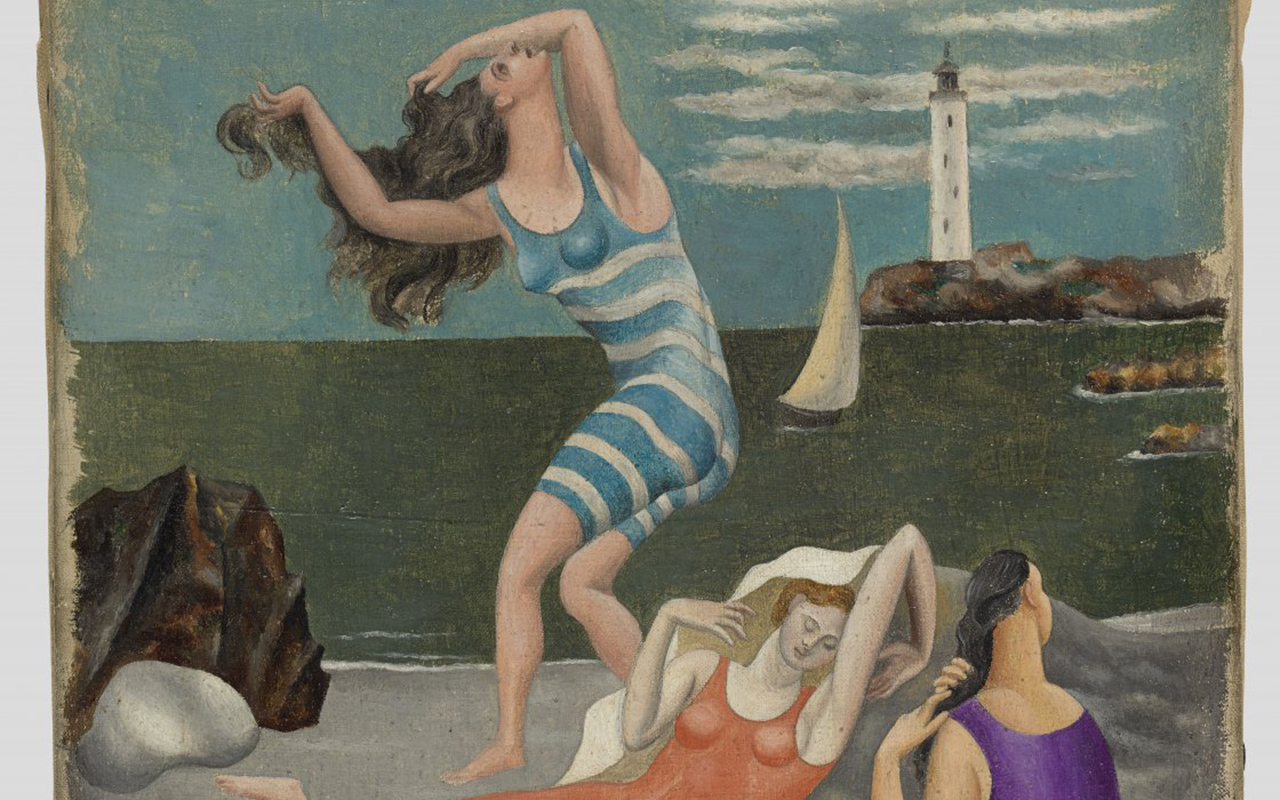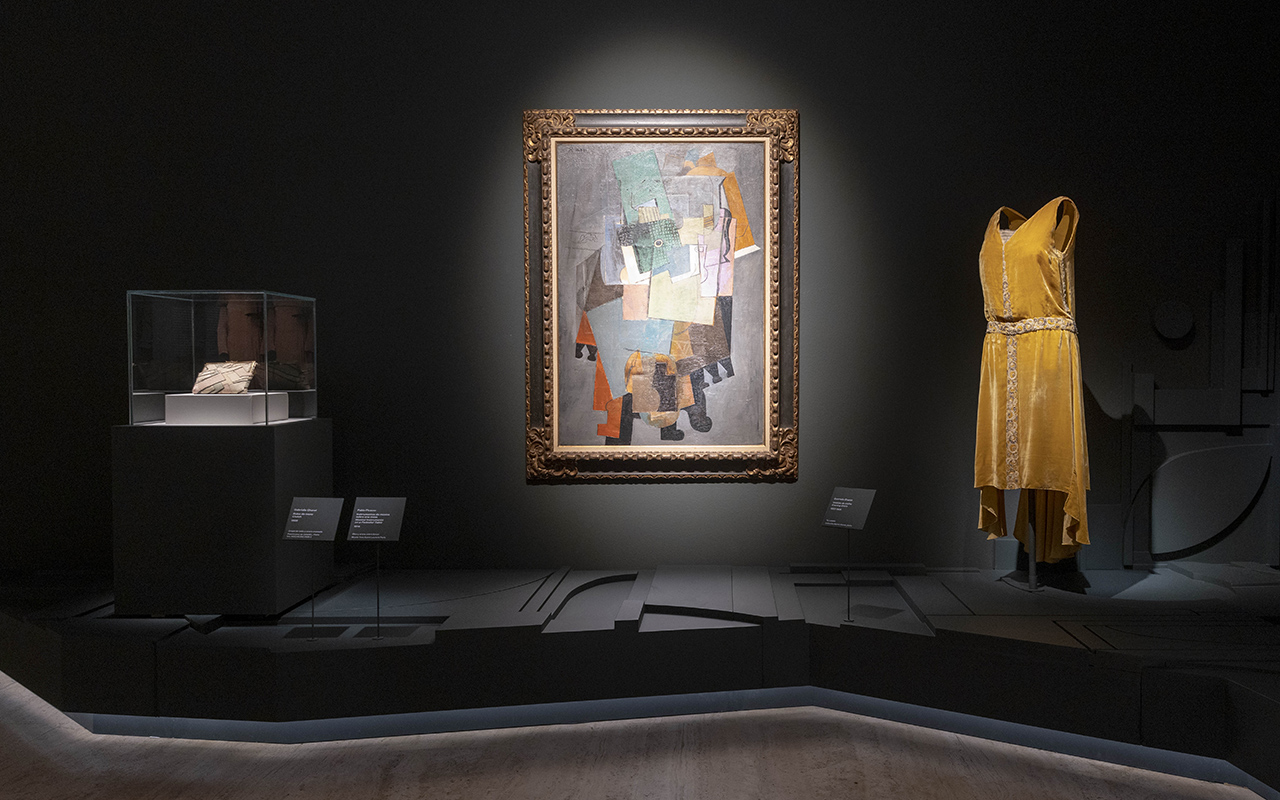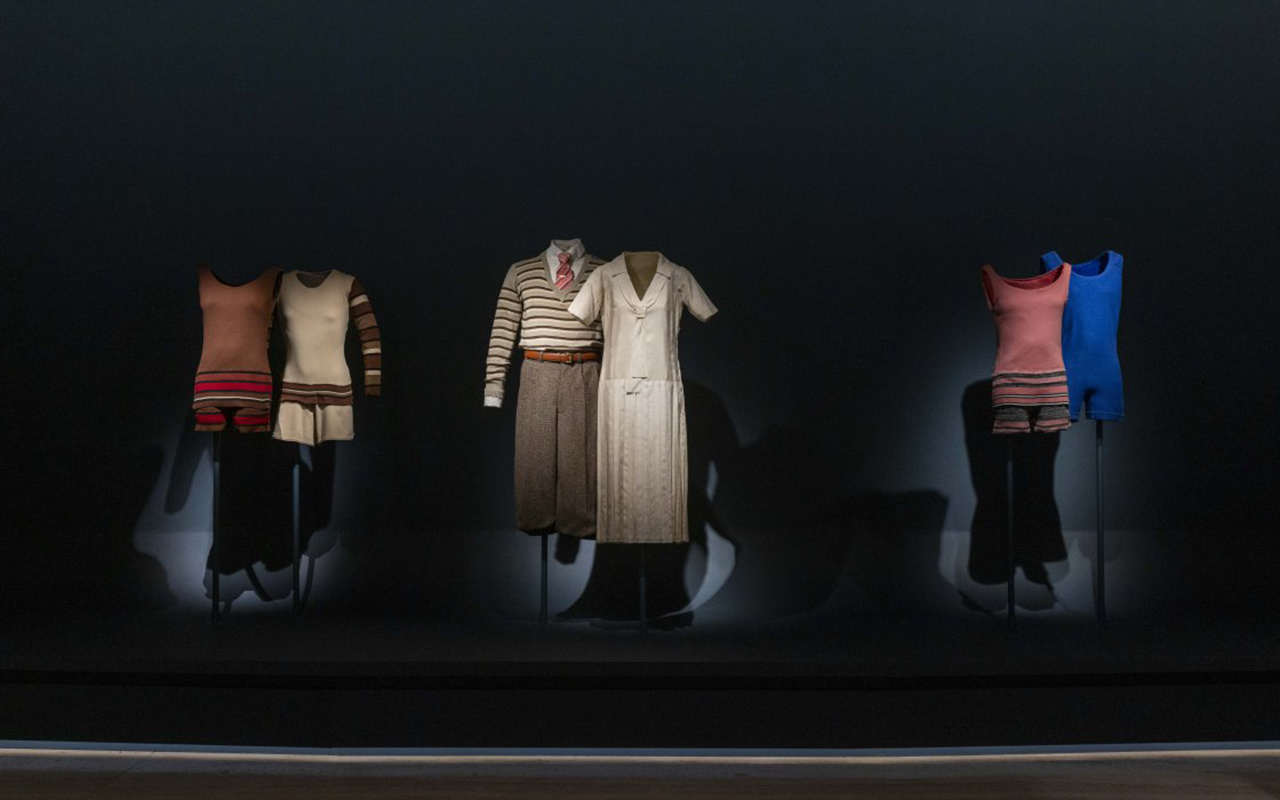
Pablo Picasso. Las bañistas, 1918. Óleo sobre lienzo. 27 x 22 cm. Musée national Picasso-Paris, donación en 1979. ©RMN Grand Palais (Musée national Picasso-Paris) © Sylvie Chan-Liat © Succession Pablo Picasso, VEGAP, Madrid, 2022.
Imagine going back 100 years ago. At a time and in a place where creativity mixes with the avant-garde. The provocation with nonconformity. painting and fashion. Imagine meeting Pablo Picasso and Gabrielle Chanel, conversing, exchanging synergies, experimenting with forms and materials, and creating art through their respective disciplines under the same aesthetic and conceptual vision. Does it not seem motivating for you?
Mutual influence
Presentations are unnecessary, Picasso and Chanel were two geniuses who met at the right time and in the right place in full professional ascension and at the peak of their talent. At the time, the two creators were in their thirties and enjoyed success and social prestige: Picasso with his paintings and Chanel with her feminine revolution towards comfortable and avant-garde elegance. Picasso and Chanel admired each other, they frequented the same artistic venues: from trendy clubs to ballet.

In the 1920s, Picasso’s cubist spirit shook all the arts and his style did not go unnoticed in Chanel’s designs: geometries, precise cuts, suits with straight lines and studied angles that were present in the dresses that triumphed among the most fashionable women. liberated and modern of the time. In general, simplicity was sought as opposed to the baroque style of the previous era. For this reason, the two geniuses also had a predilection for the same colours: the neutral ones that represented a new chromatic simplicity. Black, white and beige were very present in their respective creations. Another example, in terms of fabrics and canvases. While Picasso defended the collage technique to introduce coarser and more austere textures, Chanel defended simpler and more humble fabrics such as cotton or knitted wool. And what about the iconic perfume of the French firm? Even in this detail Picasso and Chanel agree. The Chanel nÂş5 bottle has a cubic shape with a minimalist and sober label. A container reminiscent of the bottles painted by the painter from Malaga in the Still lifes of 1912. Another simple coincidence?

Le Train Bleu: LĂ©on WoĂŻzikovsky, Lydia Sokolova, Bronislava Nijinska and Anton Dolin, 1924 Photography. 25, 4 x 33,3 cm. Library of Congress, Washington D.C., Music Division
Ballet as a connecting link
Ballet united Pablo Picasso and Gabrielle Chanel. And it was literally. The two geniuses collaborated professionally on two occasions, both with Jean Cocteau: in ‘ Antigone’ (1922) and in Sergei Diaghilev’s Russian ballet ‘ Le Train Bleu’ (1924). The painter from Malaga and the French designer had already known each other since the spring of 1917, probably through Cocteau himself or Misia Sert. Chanel established a long and lasting friendship with both that would introduce her to the circle of Picasso. From then on, Chanel would frequent the Picasso couple, coinciding with the artist’s active participation in the Russian ballets. The creator came to be closely related to the artistic and intellectual world of Paris at the time, to the point of stating: “it is the artists who have taught me rigor.”

Pablo Picasso. Sin tĂtulo / ArlequĂn y Polichinela, 1924. Temple sobre papel, 23,7 x 29,5 cm. Colecciones FundaciĂłn MAPFRE © Succession Pablo Picasso, VEGAP, Madrid, 2022
A complete exhibition
To delve deeper into the creative and personal relationships between Pablo Picasso and Gabrielle Chanel, the Thyssen Bornemisza Museum has opened the doors to one of the most eagerly-awaited exhibitions of the year to show how these two great creative geniuses of the 20th century dialogued, once again bringing together art and fashion in a new exhibition project. ‘Picasso/Chanel’ is organized into four large sections that follow each other in chronological order and cover, approximately, from 1910 to 1930.
The first block is titled ‘The Chanel style and cubism’ and presents the influence of this movement on the French designer’s creations. ‘Olga Picasso’ represents the second chapter and is dedicated to the many beautiful portraits that Picasso made of his first wife, the Russian ballerina Olga Khokhlova, a devoted Chanel client; next to them, some dresses from this initial period of the French designer, of which few examples are preserved. The third section is based on ‘Antigone’, a modern adaptation of Sophocles’ played by Cocteau. This work premiered in Paris in 1922, with sets and masks by Picasso and costumes by Chanel, which are brought together again in this chapter to show their common inspiration in classical Greece. Finally, ‘ Le Train Bleu ‘ is the title of the fourth section and of the ballet produced by Diághilev in 1924, with a libretto by Cocteau, inspired by sports and swimwear. The work ‘ Two Women Running on the Beach (The Race)’ , a small gouache that Diaghilev discovered in Picasso’s workshop, became the image for the curtain of the work, and the painter also accepted the commission to illustrate the program of hand, while Chanel, an enthusiastic athlete, created outfits for dancers inspired by sports models designed for herself and her clients.
The Picasso/Chanel exhibition can be visited at the Thyssen Museum until next January 15th 2023.

